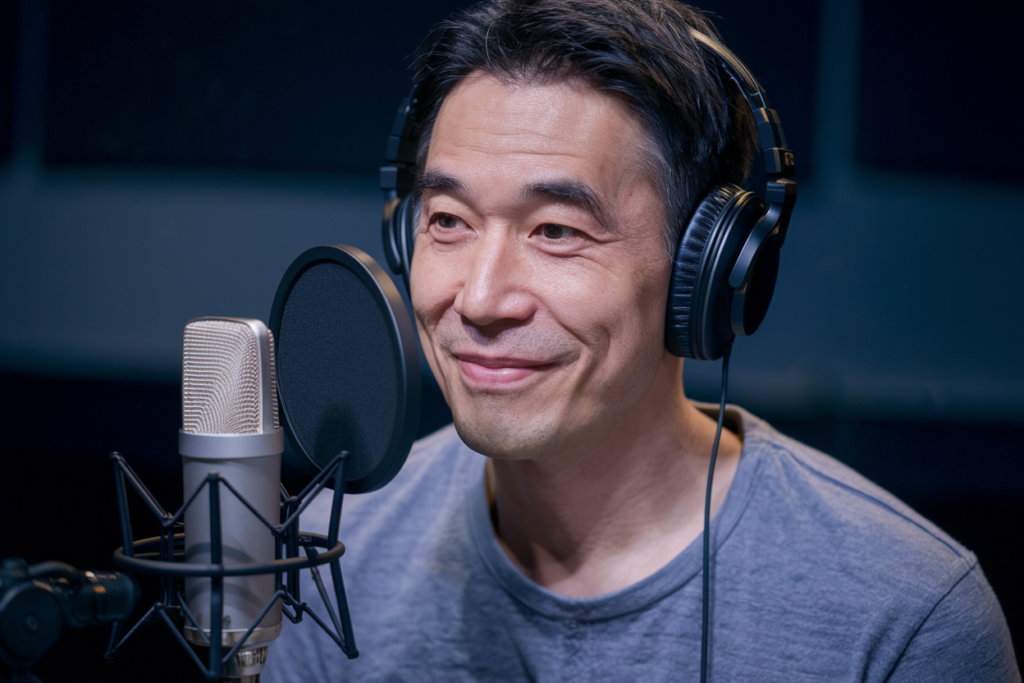Key Takeaways
- Cultural Relevance is Key: Effective Japanese script localization requires understanding cultural nuances, humor, and social norms to resonate with local audiences.
- Translation Accuracy Matters: Ensure that translations maintain the original message’s intent by working with fluent translators familiar with both languages’ subtleties.
- Voiceovers Enhance Engagement: Choosing skilled voice actors who can convey tone and emotion authentically helps build a stronger connection with viewers.
- Navigate Technical Challenges: Be aware of technical limitations like character limits in subtitles and syncing voiceovers with visuals for optimal viewer experience.
- Contextual Adaptation is Essential: Modify content to reflect local references and societal norms, enhancing relatability and keeping audiences engaged throughout the video.
- Leverage Professional Tools and Services: Utilize specialized software for subtitling, audio editing, and collaborate with professionals to elevate the quality of your localized content.
Ever wondered how Japanese script localization for video can transform your content? In a world where global audiences crave authentic experiences, getting the language right is crucial. It’s not just about translating words; it’s about capturing the essence of culture and context.
Overview Of Japanese Script Localization For Video
Japanese script localization for video involves adapting content to resonate with the local audience while maintaining its original intent. This process includes translation, cultural adaptation, and audio elements like voiceovers. It’s crucial to ensure that the script feels natural and engaging for viewers.
Localization goes beyond simple word-for-word translation. You must consider cultural nuances, humor, and context that may not directly translate. For instance, idiomatic expressions in English often require creative alternatives in Japanese to convey the same meaning effectively.
Voiceover plays a significant role in this process. Selecting the right voice talent can enhance the emotional impact of your video. A skilled voice artist understands how tone, pacing, and inflection can change a viewer’s perception dramatically. They bring scripts to life by matching their delivery style with your video’s theme.
Incorporating localized voiceovers ensures authenticity and helps build a connection with your audience. Whether it’s an animated series or promotional content, having a native speaker deliver lines creates familiarity and trust. This approach minimizes distractions from potential language barriers.
Overall, successful Japanese script localization for video combines precise translation with culturally relevant storytelling techniques and high-quality voiceover performances.
Importance Of Japanese Script Localization
Japanese script localization plays a crucial role in creating videos that resonate with audiences. It involves more than just translating words; it’s about capturing the cultural nuances and context to provide authentic experiences.
Cultural Relevance
Cultural relevance is at the heart of effective localization. When adapting scripts for a Japanese audience, understanding cultural references, humor, and social norms becomes essential. For instance, certain idiomatic expressions might not translate directly but can be creatively substituted with local equivalents that carry the same emotional weight. This approach ensures your message aligns with viewers’ expectations while preserving its original intent. A skilled voice artist enhances this process by bringing local flavor to the delivery, making it feel genuine and relatable.
Audience Engagement
Audience engagement hinges on how well your content speaks to viewers. Incorporating culturally relevant elements keeps them invested in the story being told. Using appropriate voiceover techniques fosters connection, as a talented voice actor can evoke emotions that resonate deeply with listeners. Choosing the right tone and style for your video allows you to build rapport with your audience, ensuring they feel understood and valued. Ultimately, when localization is done right—blending translation with cultural insights—you create an engaging experience that captivates viewers from start to finish.
Challenges In Japanese Script Localization
Japanese script localization presents unique challenges that require careful navigation. Adapting video content demands more than just translation; it involves understanding cultural context and nuances to create authentic experiences for your audience.
Technical Limitations
Technical limitations often pose significant hurdles in the localization process. Different video formats and platforms may require specific adaptations, affecting how scripts are translated and presented. For instance, character limits in subtitles can restrict lengthy translations, necessitating concise phrasing without losing meaning. Additionally, syncing voiceovers with visuals requires precise timing, which can complicate the integration of localized scripts. Ensuring that all technical aspects align seamlessly enhances viewer engagement.
Language Nuances
Language nuances play a crucial role in effective localization. Japanese contains various levels of politeness and formality that might not directly translate into English or other languages. It’s essential to choose language that resonates with the intended audience while preserving the original message’s intent. Certain idiomatic expressions may lack direct equivalents, requiring creative alternatives that maintain cultural relevance. Working with skilled voice actors who understand these subtleties ensures that localized content feels natural and relatable, resonating better with viewers while delivering an authentic experience.
Navigating these challenges effectively leads to high-quality localized content that captivates audiences across different cultures while conveying your message accurately.
Best Practices For Effective Localization
Effective localization requires attention to detail and a deep understanding of the target culture. You can enhance your video content by following these best practices.
Translation Accuracy
Translation accuracy guarantees that your message remains intact while adapting to the Japanese language. Focus on capturing not just words but also the intended meaning behind them. Utilize professional translators who are fluent in both languages, ensuring they understand cultural nuances and context. If you’re using voiceovers, ensure that scripts are tailored for natural delivery, as this improves listener engagement significantly. Always review translations with native speakers to catch any subtleties or idiomatic expressions that may need reworking for clarity.
Contextual Adaptation
Contextual adaptation involves modifying content so it resonates with the local audience. When localizing video scripts, consider factors like humor, references, and societal norms unique to Japan. This approach enhances relatability and maintains viewer interest throughout your content. Involving skilled voice artists familiar with these elements is crucial; their expertise ensures that tone and emotion align perfectly with localized scripts. Effective contextual adaptation makes audiences feel connected to the story being told, fostering deeper engagement than mere translation alone can achieve.
By prioritizing translation accuracy and contextual adaptation in your Japanese script localization efforts, you create an authentic experience that captivates viewers while respecting their cultural perspectives.
Tools And Resources For Localization
Localization requires a mix of tools and resources to ensure success. Leveraging the right technology can significantly enhance the quality of your video content.
Software Solutions
Utilizing specialized software streamlines the localization process. Programs designed for subtitling and captioning help you sync text with visuals effectively. Tools like Aegisub or Subtitle Edit allow for precise timing adjustments, ensuring that subtitles appear at the right moments. Additionally, translation memory software aids in maintaining consistency across projects by storing previously translated phrases. This not only speeds up future translations but also ensures your message stays clear and cohesive.
If you’re dealing with voiceovers, consider audio editing software such as Adobe Audition or Audacity. These platforms enable you to edit recordings easily, adjust sound levels, and incorporate effects that enhance viewer engagement. Investing in high-quality recording equipment is essential too; a good microphone captures crisp audio that resonates well with audiences.
Professional Services
Collaborating with professionals elevates your localization efforts significantly. Skilled voice actors bring scripts to life through their unique delivery styles and emotional range. When selecting voice talent, look for those experienced in Japanese script adaptation; they understand cultural nuances and can infuse authenticity into their performances.
Additionally, working with professional translators who specialize in video content guarantees accuracy in both language and context. Their expertise ensures that humor, idiomatic expressions, or cultural references translate appropriately without losing original intent.
Consider using project management tools like Trello or Asana when coordinating localization projects involving multiple stakeholders—this keeps everyone aligned on deadlines and responsibilities while fostering smooth communication throughout the process.
By combining robust software solutions with professional services tailored for localization needs, you create engaging video content that resonates deeply within target audiences while preserving its essence across cultures.
Conclusion
Mastering Japanese script localization is key to creating impactful video content that resonates with audiences. By embracing the cultural nuances and employing skilled voice artists, you can elevate your storytelling beyond mere translation. This not only enhances viewer engagement but also builds a deeper connection with diverse audiences.
Utilizing specialized tools and resources further streamlines the process, ensuring high-quality adaptations that respect cultural perspectives. As you navigate the complexities of localization, remember that authenticity and relatability are paramount in capturing attention and leaving a lasting impression. Prioritizing these elements will lead to successful projects that truly speak to viewers around the world.
Frequently Asked Questions
What is Japanese script localization?
Localization goes beyond translation; it involves adapting video content to resonate culturally with a Japanese audience. This includes translating dialogues, adjusting cultural references, and ensuring voiceovers capture the original intent while feeling relatable.
Why is cultural relevance important in localization?
Cultural relevance ensures that the content aligns with local social norms and expectations. Understanding cultural nuances helps maintain authenticity, making the message more engaging for viewers by resonating with their experiences.
What challenges are faced in Japanese script localization?
Challenges include technical limitations like subtitle character limits and timing issues, as well as language intricacies such as varying politeness levels and idiomatic expressions without direct translations. Navigating these requires skilled professionals.
How can accurate translation be ensured during localization?
Using professional translators fluent in both languages is essential for preserving intended meanings. Their expertise ensures that humor, references, and societal norms unique to Japan are appropriately addressed in the adaptation process.
What tools are recommended for effective localization?
Recommended tools include subtitling software like Aegisub and Subtitle Edit for syncing text with visuals, translation memory software for consistency, and audio editing programs like Adobe Audition or Audacity to enhance voiceover quality.
How does a skilled voice artist contribute to localization?
A talented voice artist brings local flavor to delivery, enhancing emotional connection with audiences. By choosing the right tone and style, they make the content feel genuine and relatable while aligning with localized scripts.







